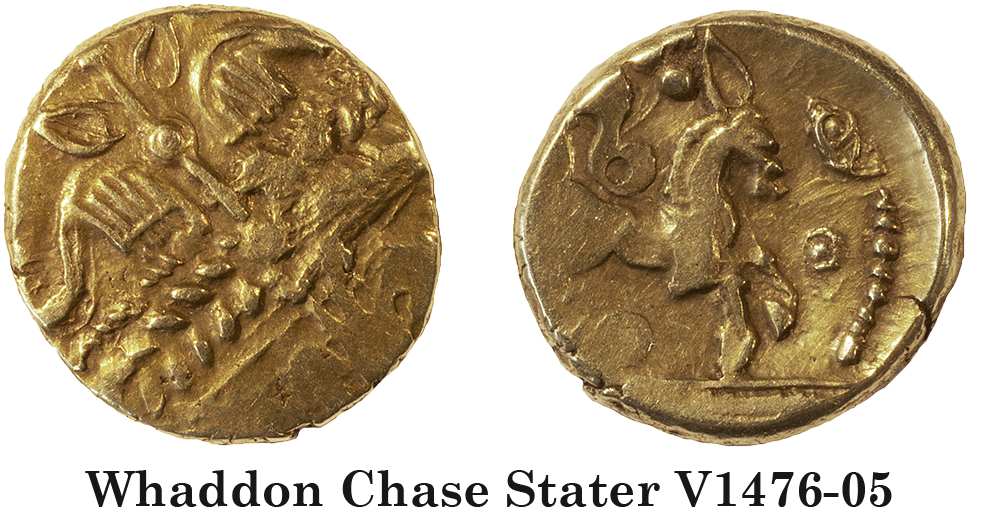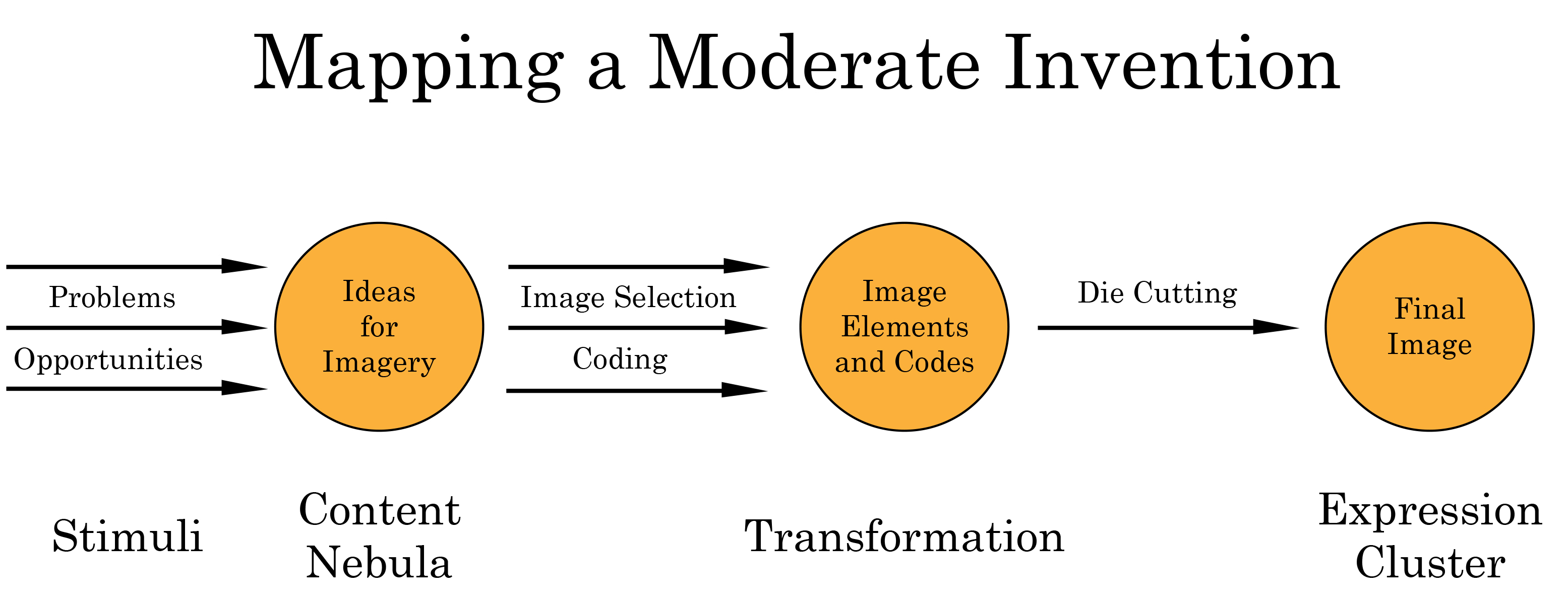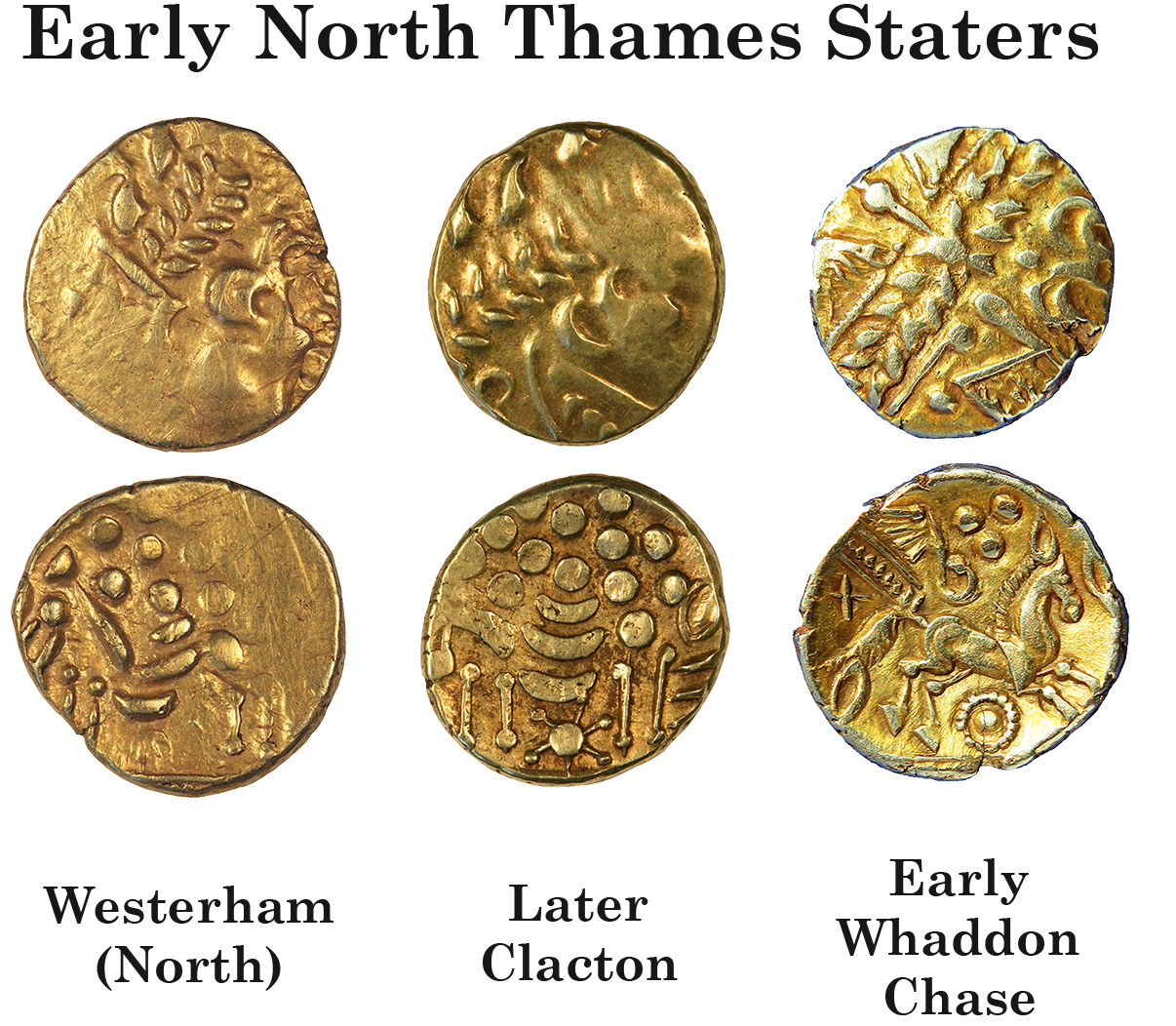
Numismatic Articles
Van Arsdell 2020d (Info)
Semiotics of Celtic Coins XVIII – We've Won the War!
By Robert D. Van Arsdell
Introduction – Caesar Invades Britain
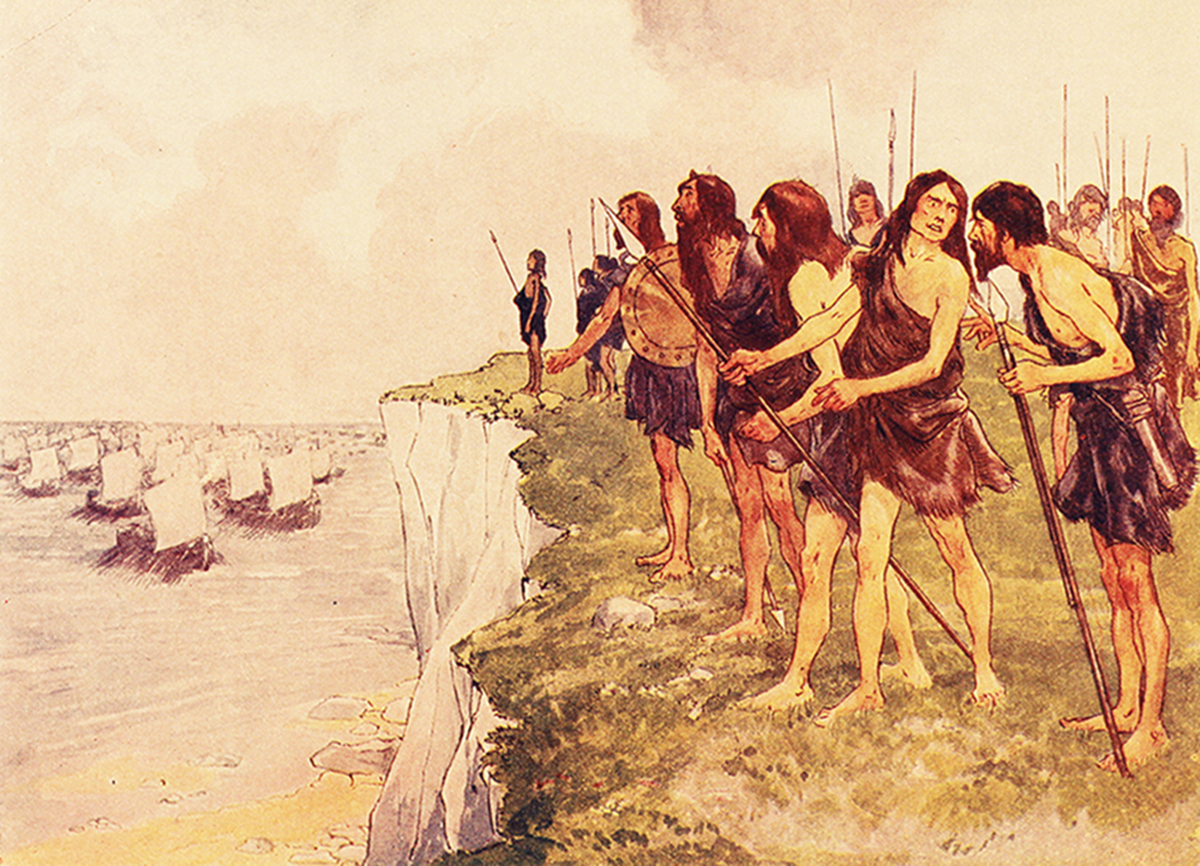
Julius Caesar sent Rome a simple account of his British invasions. He offered reasons why they were necessary and just. He described the way he subdued the Britons and extracted tribute and hostages. But most of all, Caesar left his readers believing the island might soon be added to Rome's possessions. This was not to be – he'd have problems in Gaul and never returned. (Info)
His detractors immediately started to criticise the accomplishment. Cicero, in a letter to his friends, disparaged the quality of British slaves and said there wasn't an ounce of silver on the Island. Eventually, Caesar's assassination and the Civil War meant that the task would be left to Augustus. (Info)
Horace and Ovid, poets eager to curry favor with Augustus, claimed the Britons feared his power. They hinted at an imminent invasion....but that never seemed to materialize. There was always an excuse, some unrest in the Empire had to be dealt with. According to Strabo, the Romans decided that Britain wasn't worth invading. They were making more money from customs duties than they could ever extract in tribute. Plus, Rome didn't have to pay for an army to control the island. It would take Claudius, who needed a victory to impress the people in Rome, to mount a final invasion. (Info)
But what did the Britons make of the invasions?
Early authors, Camden and Speed had little to go on. They seized on the accounts of Caesar and Strabo and gave the Roman side of the story. Aylett Sammes in 1676 followed this lead. The 1695 edition of Camden's Britannia just added the poets. Even the 1789 edition of Camden's Britannia continued to tell only the Roman account. (Info)
Horseley was one of the first authors to speculate on the British reaction. He suggested in 1732 that the British rulers probably never paid Caesar's tribute. (Info)
In the early 19th century, Ruding suggested that Caesar would have aggrandized any treasure he received in his report to Rome. If they paid any tribute, it must have been common goods:
"Had he stated the nature of the tribute he imposed upon Cassivellan, the question respecting British money would have been decided; for, without doubt, it consisted of the best things which the land afforded. But he described it only in general terms; which authorize a suspicion that it was of a kind too mean to be particularized." Ruding 1840, Annals of the Coinage of Britain, 3e, p. 97
Popular accounts by Rhys and Conybeare in the late 19th and early 20th centuries just filled the time between Caesar and Claudius with descriptions of tribes, rulers, Druids and coins. (Info)
In 1907, T. Rice Holmes criticised those who asserted the Britons never paid the tribute. He reinterpreted Strabo and suggested that Augustus had substituted customs duties for tribute because it could be collected without the need for an army. By 1930, thinking on the subject had fossilized. Hawkes and Dunning were fairly confident the tribute wasn't being paid by Augustus' reign. They accepted that Horseley was probably right. (Info)
Fresh thinking soon appeared. In 1936, Collingwood started with the conventional account: Caesar had successfully invaded but adding Britain to the Empire was a deferred project. But then he adds:
"The British point of view is less easy to define. A truly statesmanlike British king might have divined and shared the Roman view of the situation; but it would have been natural to take a shorter view, to insist on the fact that an attempt at conquest had been made and had ended in failure, to over-estimate the part played in this failure by the dangers of the Channel and the prowess of British warriors, and to mistake the respite for a reprieve." Collingwood, R.G. and Myers, J.N.L., 1936, Roman Britain and the English Settlements, p. 54
Did the Britons believe they won the war?
Collingwood's suggestion was ground-breaking – it interpreted the thinking of the Britons about the invasion. The speculation was controversial and it couldn't be easily accepted. Surprisingly, no lengthy debate seems to have occurred. Perhaps the suggestion had been too hot to handle.
In his 1951 article, Stevens criticizes Collingwood on several points. Collingwood had suggested that Horace "committed" Augustus to an invasion – no Roman Emperor would allow a poet to do that. He questions Collingwood's description of Tincomarus and Dubnovellaunus as "dynasts". But he doesn't comment on the idea that the Britons might have believed they won the war. Collingwood had inserted the idea almost as a provocation – it could be ignored. (Info)
Later writers tended to dwell on the numismatics in an attempt to interpret the period. Some tried to assign staters to Cassivellaunus or the Catuvellauni. (Info) This led to the usual sterile debates about dot maps and typology, but no reappraisal of the thinking of the Britons.
Yet Collingwood's idea still hangs there as a taunt. Was he onto something? One could assert there was no way to tell. The Britons left no record of their thoughts....or did they? There's reason to believe the imagery on a Whaddon Chase stater does indeed reveal their thinking.
Something New North of the Thames

These three staters were all used North of the Thames during the Gallic War. The Westerhams and Clactons have the usual immobilized types used early in the War (an Apollo wreath on the obverse and a stick-figure horse on the reverse). Because they carry immobilized types, the images are Replicas. Replicas should be undercoded in the absense of additional information. Thus they mean something like "coin of the realm" and further speculation will be fruitless. (Info)
The Whaddon Chase stater, introduced around the time of Caesar's invasions, show a marked departure from the immobilized types of the past. It suggests a significant event occurred – one that demanded a fresh approach to the imagery.
The new type, with its bold Moderate Invention on the reverse, was something new in British imagery. It alerted the ancient British elites that something happened that demanded their attention. It should, in turn, tip us off that there is a semiotic departure here, something that calls for special interpretation.
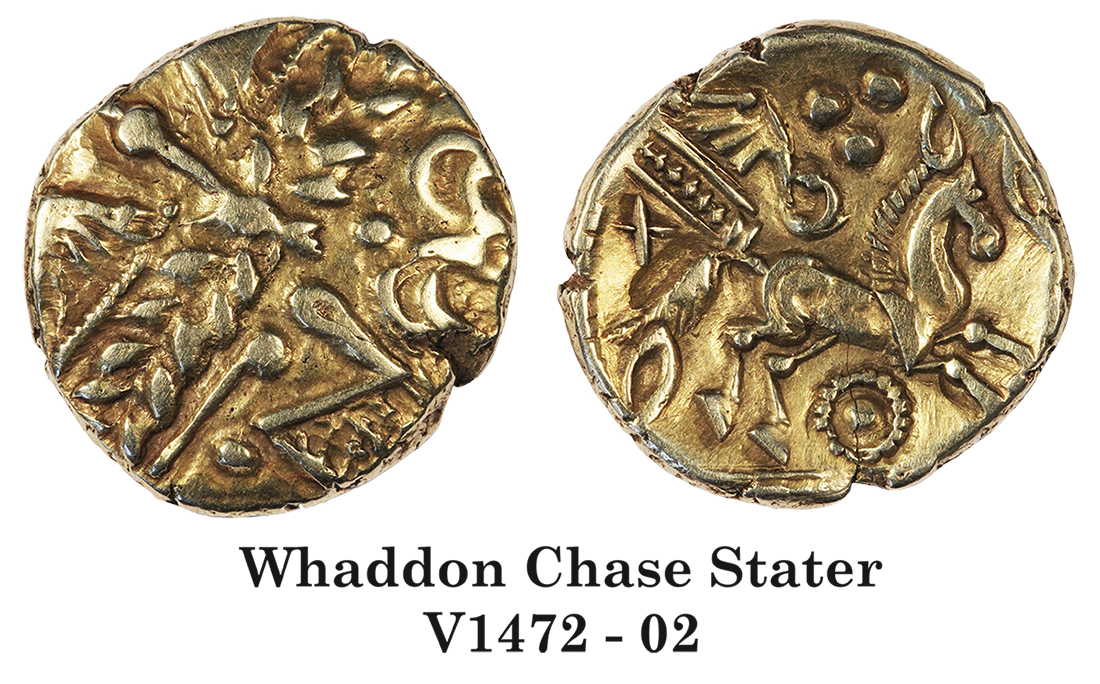
The Whaddon Chase staters tell their story well. In 1984, I suggested that the field objects on the reverse of one die were adapted from images on Roman denarii. (Info) In 2014, I re-examined the varius die varieties with a stereo microscope and determined that two die-cutters were involved. One appeared to be more experienced than the other – perhaps a master and an apprentice. The "master" produced a reasonably competent image of two wings on the obverse, the "apprentice" degraded this to a pair of combs with curved handles. If we only had the coins with the combs, we wouldn't guess they were supposed to be wings. (See the other die-cutter's work) For this reason, I believed the coins with the wings were the first issued. One could argue differently, but this doesn't change the story. (Info)
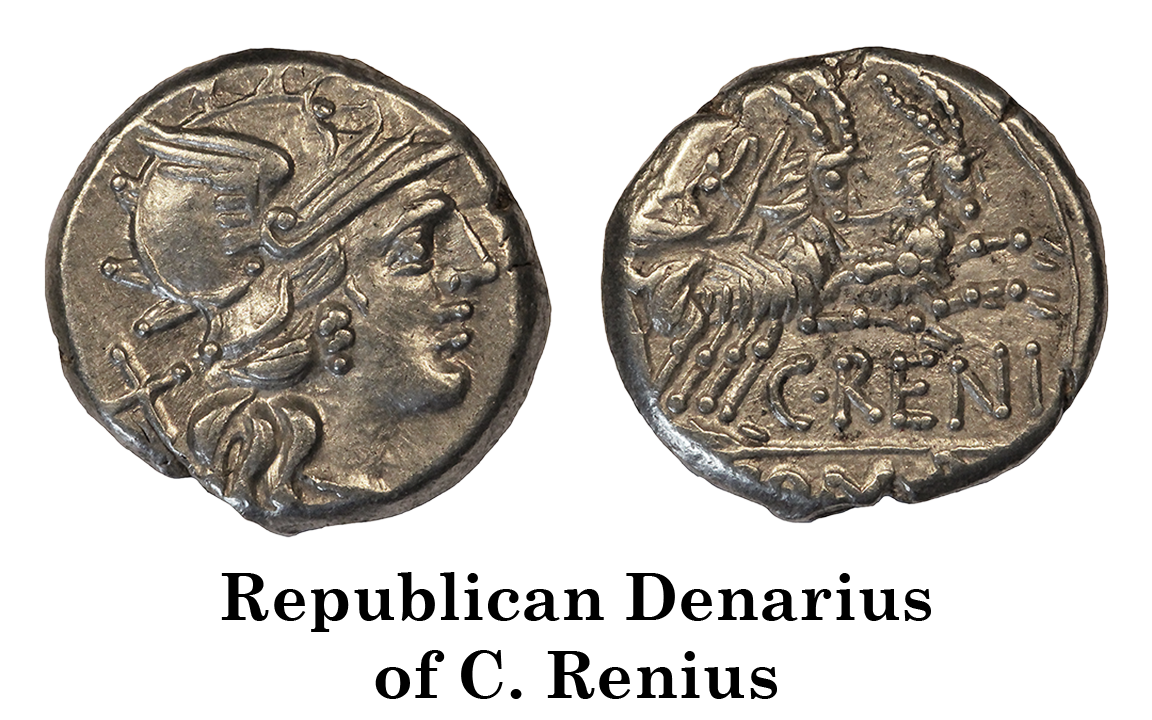
The Roma Head denarii of the Roman Republic are the inspiration for many of the details seen on Whaddon Chase coins. The wing on the helmet, and the "X" for the denomination were adapted onto the reverse of the V1472-01 type. (Info)
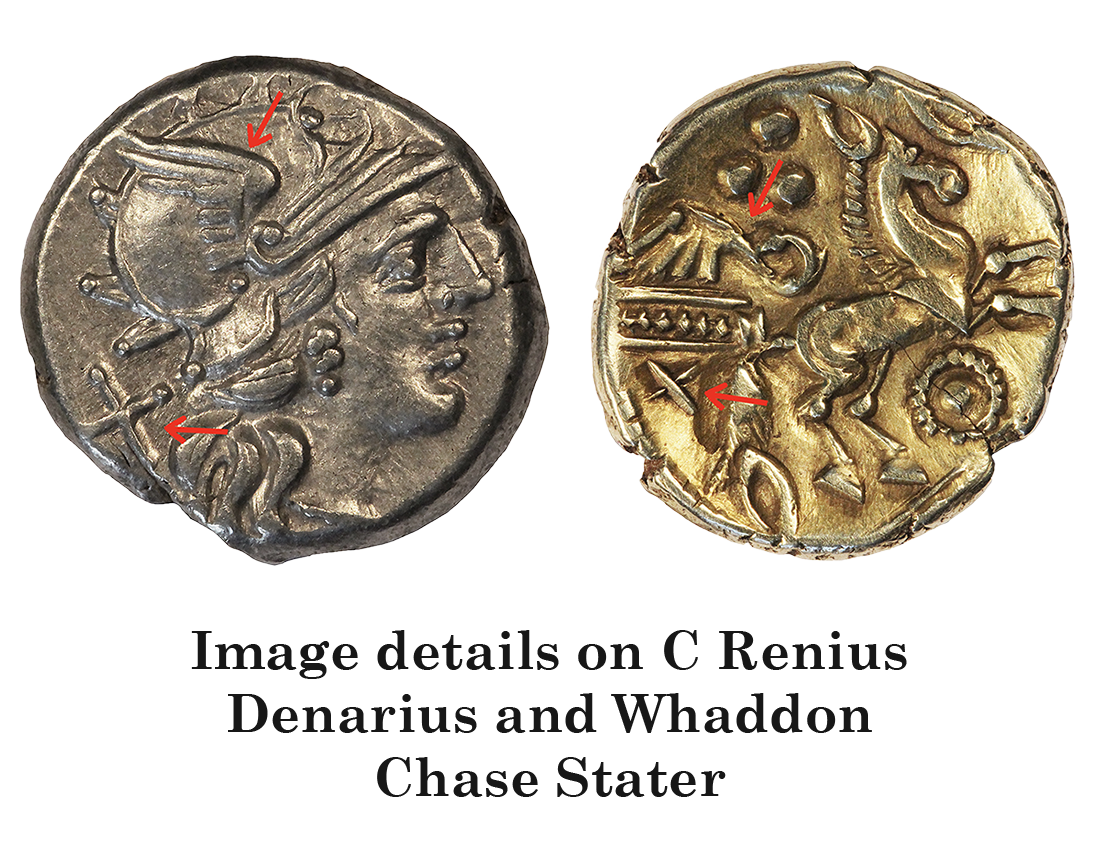
The wing and "X" are placed on the reverse of the Whaddon Chase stater in almost the same relationship as on the denarius (arrows). The "ladder" between the wing and "X" is more difficult to explain. In 1984, I suggested it might be the tripod from the denarius of M. Opeimi, 131 BC, Crawford 254/1. But there is now a better suggestion.
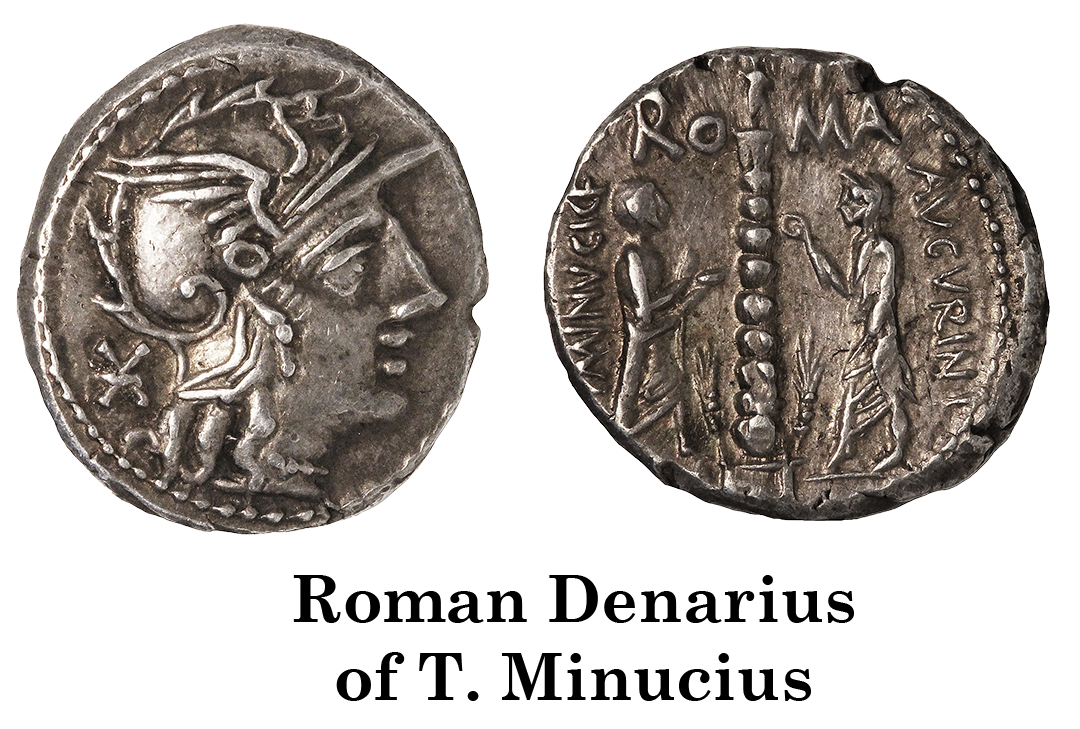
The column on the reverse of a T. Minucius denarius of 138 BC is a better match. Denarii of this type have been found in Britain, so this source of inspiration is at least plausible. (Info)
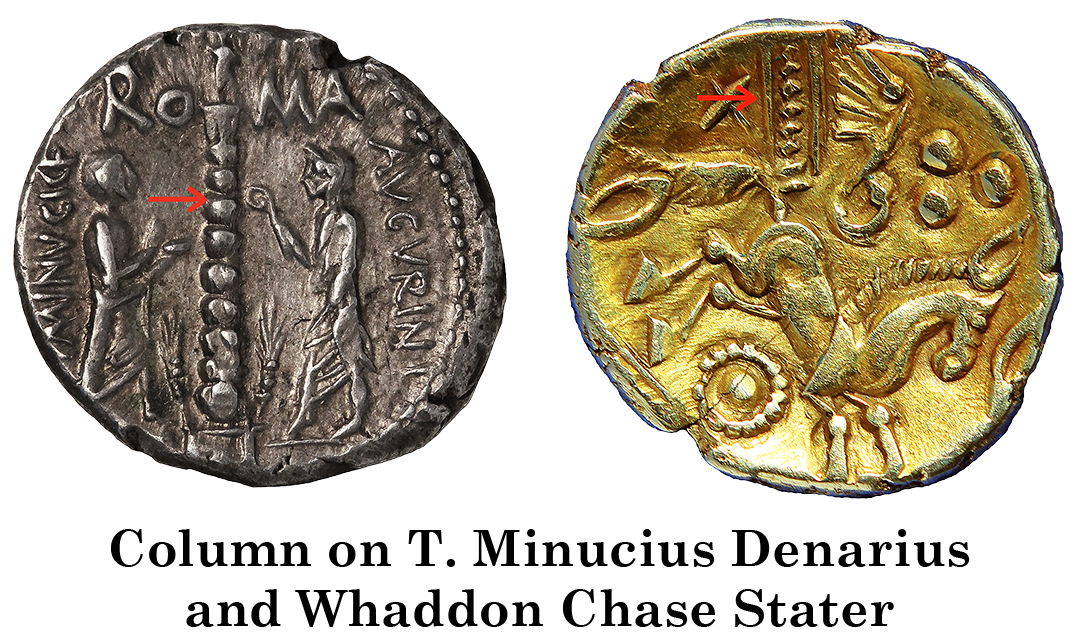
Arrows show the objects on the two coins.
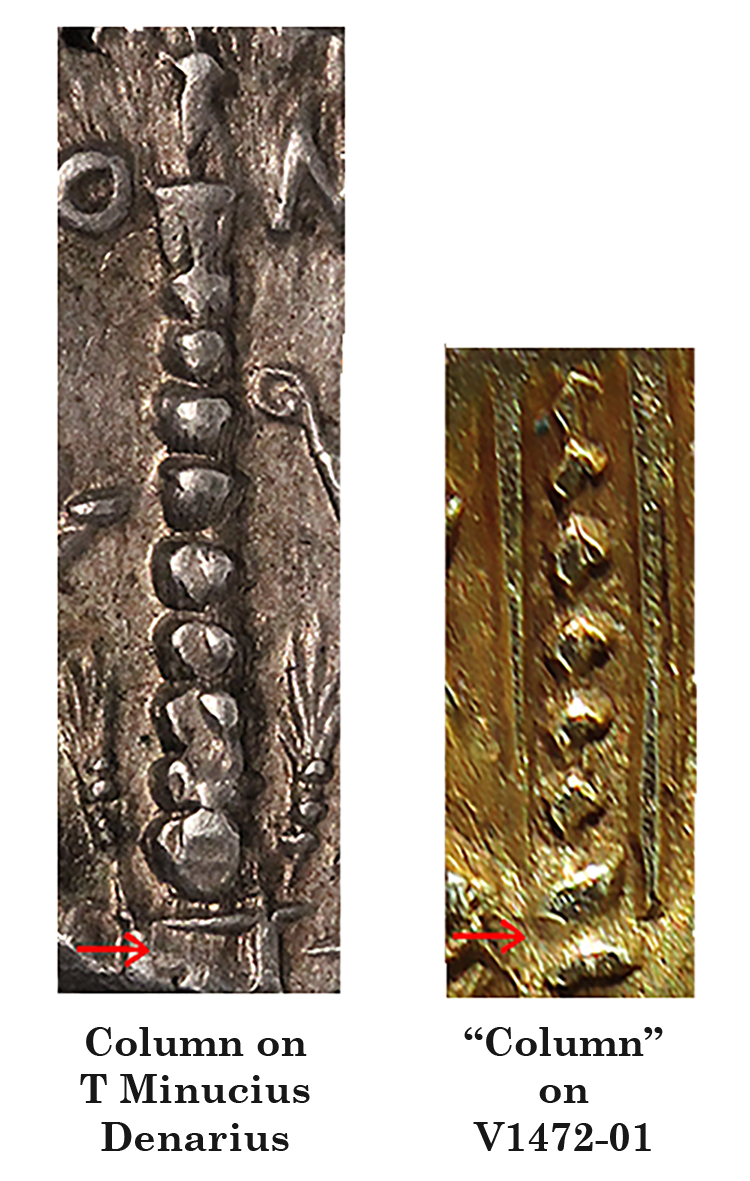
Both images have a base at the bottom of the column (arrows). The base on the Whaddon Chase stater is made up of two pellets, larger than the ones used for the column.
The major difference is the addition of two lines on either side of the column on the gold stater. These may be vestiges of the two figures on either side of the column.
In general, both of the wings on the obverse, and the three field objects on the reverse can be seen to have their inspiration from Roman denarii.
The important point is that whoever selected and approved the addition of these objects must have been aligned with Rome in some way. Their inclusion on the gold stater could been seen as bragging about that relationship.
Bibliography for this article (List)
Background information about the following Semiotic analysis (Info)
The Semiotics
Are the images Replicas or Moderate Inventions?
The images on the Whaddon Chase staters are new and complex ones with a multitude of field objects. They should be analyzed as Moderate Inventions produced via Ratio Difficilis. We should be looking for creativity and expect risk-taking. (Info)
Do the images use borrowed Codes?
The next issue to decide is whether the Britsh ruler borrowed the Roman Codes for the column, wings and "X".
The T. Minucius coin was struck 80 years before the Whaddon Chase staters. It's unlikely anyone in Britain would have known about the column, its meaning or the story of the Minucia family. The wing on Roma's helmet was more a decoration than a semiotic device. (Info) The "X" indicated the denomination on the denarius. It wouldn't serve that function on a gold stater. It's unlikely the British ruler used the Roman Codes for any of these objects.
Thus, the ruler borrowed the images, but created new Codes for the meaning. We have to search the Stimuli, Content Nebula and Transformation to discover what those Codes might have been.
Circumstance Selectors
Normally, little thought is given to the Circumstance Selectors. With most Celtic coins, the Selector for the image creator is a "ruler" or "issuing authority". The audience for the imagery are either "elites" for gold coins or "elites, artisans and traders" for silver and bronze. (Info)
We have two kinds of plausible rulers for the early Whaddon Chase staters. Choosing one will influence the outcome of the analysis. In the North Thames region, there were both winners and losers during Caesar's invasion of 54 BC. We could choose a loser: a defeated tribe or ruler, for example. Alternatively, we could pick a winner: one of Caesar's allies. One way to handle this would be to do the analysis twice and pick the best result. However, there are reasons to believe one group of rulers would be better than the other.
If we pick a loser...
If we choose a loser of the Invasion, we would probably say the staters were struck by the Catuvellauni, or alternatively Cassivellaunus. Caesar would be the source of our information. Choosing "Cassivellaunus, the ruler of the Catuvellauni" would be a mistake, because this exceeds Caesar's testimony.
We might be comforted by the 1970s conventional wisdom that the staters were Catuvellaunian. Most of the coins had been found in Catuvellaunian territory (as shown on Ptolemy's map). Some workers had used Caesar's description of the invasion to support Ptolemy's placement. We would rely on the belief that "most coins are found in the area they were made".
We might then anticipate the Catuvellauni (or Cassivellaunus) were bragging about something having to do with the Romans. But there are problems...
Caesar spent much of the campaign ravaging Catuvellaunian territory. He won a difficult battle against them, set terms of surrender, extracted tribute and took hostages. The Catuvellaunian leadership would have a difficult time saying anything good about their relationship with Rome. True, semiotics can be used to lie, but then our analysis will have to detect and elaborate one. One possibility would be they had taken Collingwood's "shorter view" and declared victory. But the devastation of Catuvellaunian territory wouldn't have felt like one to the victims.
We also have the nagging suspicion that the findspots might not fall in Catuvellaunian territory. Using the coin findspots to define the border between the Catuvellauni and Trinovantes would engage in circular reasoning. (Info)
Furthermore, Caesar mentions other tribes that surrendered to Rome, such as the Ancalites and Bibroci. We have no idea where these tribes were located. The findspot interpretation could be building us a house of cards.
One more thing – Cicero's brother Quintus was part of the invading force and was writing back to Cicero as events unfolded. Cicero wrote to a friend that "I hear there is there is not an ounce of either gold or silver in Britain". We will have to believe that Caesar's army suddenly lost the skill of extracting precious metals from conquered enemies. We could engage in special pleading that the Catuvellauni had indeed hid their gold, that the message on the staters was something like "Success! – we hid our gold and you're holding a piece of it." We would then believe that they could do this with impunity, that the Romans wouldn't come back over and take that gold.
If we pick a winner....the problems tend to go away.
The available choices for the issuing authority have something to brag about – and motives for doing so.
If we choose a winner of the Invasion, we would choose a "friendly king" (or friendly tribe) allied to the Romans. One plausible choice would be Mandubracius of the Trinovantes. There were other allies, but the Trinovantes are the easiest to explain. Again, Caesar is the source of our information.
Mandubracius, the leader of the Trinovantes had fled and sought Caesar's help. Cassivelaunus had killed his father and Mandubracius urged Caesar to reinstate him as ruler. Caesar acted to defeat Cassivellaunus and force him to stop injuring the Trinovantes. We can see Mandubracius as a "friendly king" exploiting his relations with Rome to his advantage.
John Creighton, in his Coins and Power in late Iron Age Britain, drew on the work of historian David Braund. Braund explored the complex relationship between Rome and "friendly kings" on the fringes of the Empire. We can use Braund's insights to help us analyze the semotics here. They are useful for identifying likely Stimuli we can use.
Friendly kings could expect the Romans to help them militarily, diplomatically and financially. They could ask Rome to act as a mediator on their behalf in negotiations with other tribes. The friendly king had the same kinds of obligations to Rome, so the relationships tended to be complex.
Mandubracius had demonstrated his prowess as a friendly king when he obtained military help from the Romans – he had something to brag about. He could use this to impress the elites in his own tribe. But perhaps more importantly, he could use his influence with Rome to impress the elites in enemy tribes.
It is entirely plausible that the Trinovantes received financial aid from the Romans as well. They might also have received special trading rights that enriched them in cross-channel trade. Such benefits could explain why the Trinovantes would have gold to strike staters during the middle of the Gallic War.
We will have to accept that not all coins that wound up in Catuvellaunian territory were struck by the Catuvellauni. We would have to accept that the Trinovantes used some largesse they received from the Romans to buy goods from the Catuvellauni or bribe their elites. But the mechanism is there.
The choice of a friendly king opens the door to explaining who, logically, had the bragging rights. A friendly king could proclaim he had won a war with the Romans – through diplomacy. A friendly king could declare "the Romans are my friend and protector, and I am theirs. I can use my relationship with Rome to enrich my elites and those of my allies in Britain."
Without Braund's insights, we would be at loss to indentify many of the Stimuli at work. We could easily choose the wrong ruler and formulate a spurius Content Nebula in that ruler's mind. But there is no compelling reason to insist that Mandubracius or the Trinovantes have to be the friendly king and allied tribe in the analysis. We can use the less controversial term "Friendly King" and keep the issue open as to which one.
In the rest of the analysis, I will draw heavily from Braund's work to elaborate the Stimuli any British Ruler in the North Thames region would have received and the Content Nebula that formed in the mind of a friendly king. (Info)
The Stimuli
I have already discussed many of the Stimuli in my attempt to choose the issuing authority of the Whaddon Chase staters. The following list gives some more Stimuli and then the discussion will turn to the most important ones. (Stimuli)
The key stimuli involve the status of friendly kings in Britain during and after Caesar's invasions. They would be able to argue that diplomacy had served the Britons better than military force. Some of these friendly kings might need to strengthen their hold on power during this period.
The Content Nebula
The key items in the Content Nebula in any friendly king's mind would involve questions about the best way to use their relationship with Rome to their advantage. They would be looking to influence elites in neighbouring tribes. Some friendly kings may have needed to legitimize their power within their own tribe. (Content Nebula)
Gold coins could be used to send meessages to elites locally, and in neighbouring tribes.
The Transformation and Expression Cluster
The friendly king would issue a gold coinage displaying bold new imagery. The ruler would add new field objects borrowed from Roman denarii to proclaim the advantageous relationship with Rome. The friendly king would assert that diplomacy had gained this advantage, not war.(Transformation and Expression Cluster)
The Sememe
The key message of the Whaddon Chase stater is the ruler has used diplomacy to win a strategic relationship with Rome. This relationship will benefit the elites in the ruler's tribe. If elites in neighbouring tribes ally themselves with the ruler, they could benefit as well.(Sememe)
Summary
The message is basically one of victory through diplomacy. The ruler has actually done more than Collingwood suggested. The ruler had, as time would reveal, placed Britain in an advantageous position. Rome wouldn't invade again for another ninety years. Trade with the Romans in Gaul would enrich the tribes of the friendly kings in Britain. The message on the coin would be seen as the truth as time went on. It truly could be seen as a victory.
It should be emphasized that a defeated tribe or ruler, especially the Catuvellauni or Cassivellaunus, would be lying if they took Collingwood's short view. Although the Romans left, the Trinovantes were protected and eventually prospered. Any "victory" the defeated could claim would soon be seen as a hollow one.
The message on the Whaddon Chase stater can go some way to explain why Tincomarus and Dubnovellaunus were deposed and fled to Rome many years later. It would partially explain why Augustus didn't reinstate them on their thrones. As Braund tells us, the relationship between Rome and the friendly kings was complex and reciprocal. The tribes would expect Rome to return their obsides as effective leaders – and to hold Rome to that part of the bargain.
Whether Mandubracius and the Trinovantes are the source of the Whaddon Chase type should be considered an open issue. I would argue that the Trinovantes are the issuing authority based on the semiotics. Yes, there are problems with the dot maps, but I assert that dot maps are highly overrated as interpretative devices.
End

